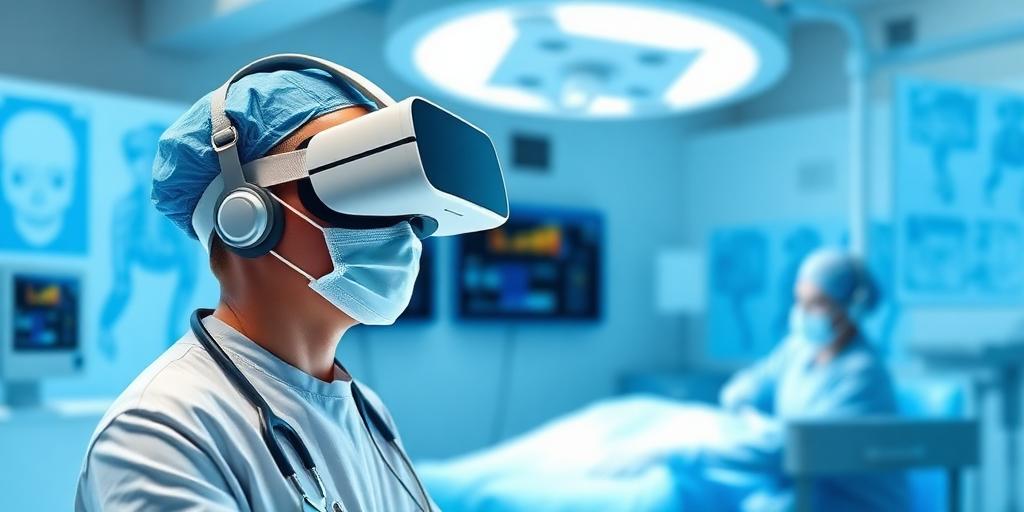Virtual Reality in Medical Training and Therapy: A Global and Indian Perspective (2025)
Virtual Reality (VR) is rapidly transforming numerous sectors, and healthcare is no exception. This article explores the increasing role of VR in medical training and therapy, with a focus on both global trends and specific developments within India as we approach 2025.
Global Advancements in VR for Medicine
Globally, VR is being implemented in healthcare in various innovative ways:
- Surgical Training: VR simulations allow surgeons to practice complex procedures in a risk-free environment, enhancing precision and reducing errors. Companies like Osso VR and FundamentalVR are leading this charge.
- Medical Education: Medical students can use VR to explore the human anatomy in an immersive 3D environment, providing a deeper understanding than traditional textbooks or 2D models.
- Pain Management: VR is being used to distract patients from pain during procedures or as a non-pharmacological approach to chronic pain management. Studies have shown its effectiveness in reducing pain perception.
- Mental Health Therapy: VR provides controlled environments for treating phobias, PTSD, and anxiety disorders. Patients can confront their fears in a safe and guided setting.
- Rehabilitation: VR is assisting patients in recovering motor skills after strokes or injuries through interactive and engaging exercises.
VR in Indian Healthcare: Opportunities and Challenges
India’s healthcare sector, while rapidly advancing, faces unique challenges such as:
- Limited Resources: VR solutions can provide cost-effective training and therapy options, especially in areas with limited access to specialists or advanced equipment.
- Large Population: VR can scale medical education and training programs to reach a large number of healthcare professionals across the country.
- Diverse Language and Cultural Considerations: VR applications need to be culturally sensitive and available in multiple languages to be effectively adopted.
Current applications of VR in India:
- Medical Training: Several medical colleges are starting to incorporate VR simulations into their curricula for surgical training and anatomy education.
- Patient Education: VR is being used to educate patients about their conditions and treatment options in an engaging manner.
- Pain Management: Some hospitals are piloting VR-based pain management programs for chronic pain patients.
Challenges to adoption in India:
- Cost: The initial investment in VR hardware and software can be a barrier for many institutions.
- Infrastructure: Reliable internet connectivity and adequate computing power are necessary for effective VR implementation.
- Awareness and Training: Healthcare professionals need to be trained on how to use VR technology effectively.
The Future of VR in Medical Training and Therapy (2025)
By 2025, we can expect to see:
- Increased adoption of VR in medical education and training globally and in India as costs decrease and awareness increases.
- More sophisticated VR simulations that provide realistic and immersive experiences.
- Integration of AI and machine learning into VR applications to personalize training and therapy.
- Development of VR-based remote healthcare solutions that can reach patients in underserved areas.
- Greater evidence-based research demonstrating the effectiveness of VR in various medical applications.
Conclusion
Virtual Reality holds immense potential to revolutionize medical training and therapy, offering innovative solutions to address healthcare challenges both globally and in India. As technology advances and costs decrease, we can expect to see widespread adoption of VR in the healthcare sector, leading to improved patient outcomes and a more skilled healthcare workforce.
